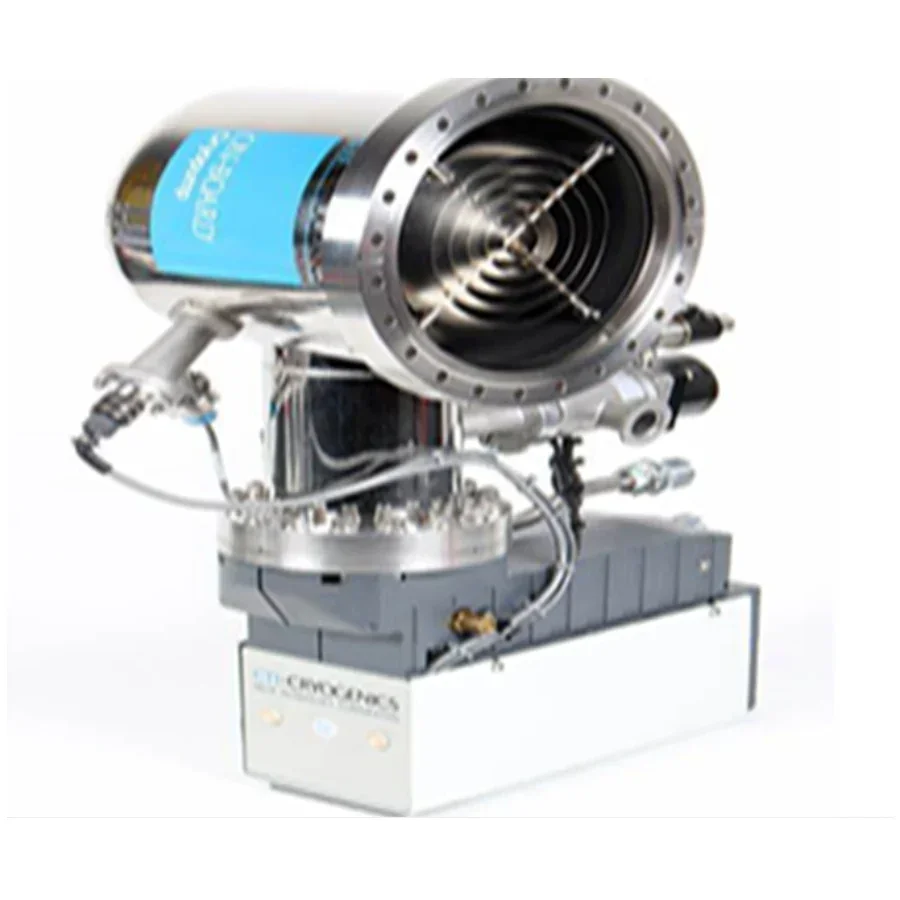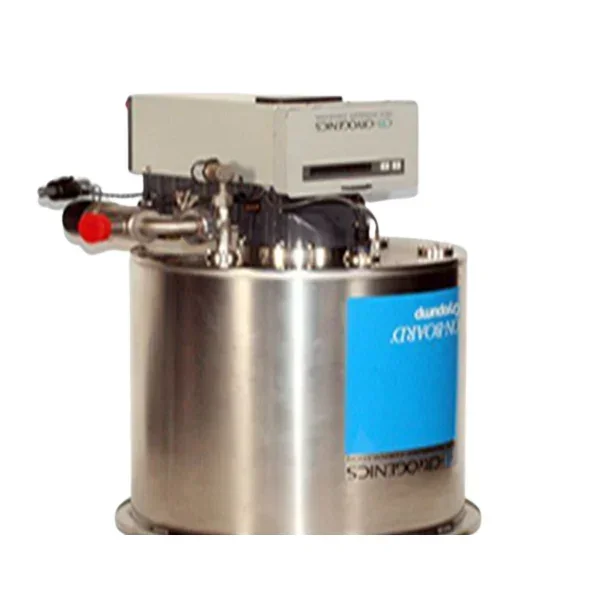Understanding Cryopump Operation
How Cryopumps Work
A cryopump operates by using extremely low temperatures to condense and trap gases. It consists of a cold head, which is cooled by liquid helium or nitrogen, and a series of pumping stages. When gas molecules come into contact with the cold surfaces of the cryopump, they lose energy and freeze onto those surfaces. This process effectively removes the gas from the vacuum chamber.
Cryopumps are highly efficient at achieving ultra-high vacuums because they can reach temperatures as low as 4 Kelvin (-269°C). The use of these frigid temperatures allows for effective trapping and removal of gases such as water vapor, hydrocarbons, and other contaminants in vacuum systems.
Components of a Cryopump
The main components of a cryogenic pump include the compressor, heat exchanger, expansion engine (also known as an expander), reservoirs for storing cryogens like liquid nitrogen or helium, regenerators for cooling incoming gases before reaching the adsorptive surface area inside the pump itself. These components work together to create an environment where gas molecules can be captured efficiently.
The compressor is responsible for compressing gaseous helium or nitrogen into high-pressure liquids that flow through tubes to cool down various parts within the cryopump system. The heat exchanger then uses this pressurized liquid to cool down incoming gases before they reach the adsorptive surface area where freezing occurs.
In addition to these primary components, there are also safety features such as relief valves that prevent over-pressurization in case something malfunctions during operation.
Benefits of Cryopumps
Enhanced Pumping Speed
Cryopumps offer significantly higher pumping speed compared to other types of pumps. This means they can quickly and efficiently remove gases from a vacuum chamber, making them ideal for applications requiring rapid gas removal. For instance, in semiconductor manufacturing, the high pumping speed of cryopumps enables faster processing times, leading to increased productivity.
In addition to their impressive pumping speed, cryopumps are also known for their ability to achieve ultra-high vacuums. This is essential in industries such as aerospace and research facilities where maintaining extremely low pressure environments is critical. The combination of high pumping speed and ultra-high vacuum capability makes cryopumps indispensable in various cutting-edge technologies.
Minimal Contamination Risk
One significant advantage of using cryopumps is their minimal risk of contaminating the vacuum environment. Since they operate at very low temperatures (typically below -150°C), most gases condense on the pump's surfaces rather than being released back into the system. This prevents cross-contamination between different processes within a vacuum chamber.
Moreover, because cryopumps rely on cold surfaces to trap gases, there are no moving parts that come into contact with process gases. As a result, there is little chance of pump oil or other lubricants contaminating the vacuum space—ensuring clean and uncontaminated conditions for sensitive manufacturing processes or research experiments.
Energy Efficiency
Another benefit of using cryopumps lies in their energy efficiency. Unlike some other types of pumps that require continuous operation even when not actively removing gases from the chamber, cryogenic pumps only consume power when cooling down or during actual gas removal cycles.
Since cryogenic temperatures are used to capture and trap gases effectively without consuming excessive amounts of energy during operation, this makes them an environmentally friendly option compared to some traditional pump technologies that may use more power or produce more waste heat during operation.

Fundamental Principles and Structure of Cryopumps
How Cryopumps Work
Cryopumps operate on the principle that gases can be captured and removed from a vacuum chamber through freezing. When activated, the cryo pump's surface becomes extremely cold, causing any gas molecules to freeze upon contact. This frozen gas then sticks to the pump's surface, effectively removing it from the vacuum environment.
The process involves two stages: adsorption and desorption. During adsorption, gas molecules adhere to the cryo pump's cold surface. Then, when the pump is warmed up (desorbed), these trapped molecules are released as a result of thermal energy input or by heating elements within the device.
Cryopumps are highly efficient in achieving ultra-high vacuums due to their ability to capture a wide range of gases at low temperatures.
Components of Cryopumps
A typical cryo pump consists of several key components working together for effective operation:
-
Cold Head: This component is responsible for cooling down the interior surfaces where gas molecules will be captured.
-
Compressor: It circulates a refrigerant (such as helium or nitrogen) through tubes within the cold head.
-
Heat Exchanger: It transfers heat out of the system using an external source, aiding in maintaining low temperatures inside.
-
Vacuum Enclosure: The entire assembly is enclosed in a vacuum vessel which prevents heat transfer from external sources into its internal parts.
These components work synergistically to create an environment conducive for capturing and removing gases from vacuum chambers.
Applications of Cryopumps
Cryogenics plays an essential role in various industries such as semiconductor manufacturing, research laboratories, space simulation chambers, and more. In semiconductor production facilities, cryo pumps are used for creating clean environments with minimal contamination caused by residual gases. Research labs utilize them for experiments requiring ultra-high vacuums like particle accelerators or fusion reactors.
Moreover, space simulation chambers use cryo pumps to simulate outer space conditions by achieving extremely low pressures similar to those found beyond Earth's atmosphere.
Performance Characteristics of Cryopumps
Efficiency
Cryopumps are known for their efficiency in achieving ultra-high vacuum levels. They can reach pressures as low as 10^-12 Torr, making them ideal for applications requiring extremely clean and pure vacuum environments. This exceptional efficiency is due to the use of cryogenic temperatures to condense and trap gases, allowing cryopumps to achieve superior vacuum performance compared to other types of pumps.
Cryopumps operate by freezing gases on a cold surface within the pump, causing them to solidify and adhere to the surface. As a result, they effectively remove unwanted gas molecules from the system, leading to significantly lower pressures. The ability of cryopumps to maintain high pumping speeds even at very low pressures contributes to their remarkable efficiency.
Pumping Speed
One of the key performance characteristics of cryopumps is their pumping speed, which refers to the rate at which they can remove gas molecules from a vacuum chamber or system. Cryopumps are capable of achieving high pumping speeds across a wide pressure range, making them suitable for various industrial and scientific applications.
The pumping speed remains relatively constant over an extensive pressure range, ensuring consistent performance regardless of pressure fluctuations within the system. For instance, in semiconductor manufacturing processes where rapid evacuation is essential for maintaining precise control over process conditions, cryopumps' high pumping speeds play a crucial role in enhancing productivity and product quality.
Regeneration Time
Another important aspect of cryopump performance is their regeneration time, which denotes how quickly they can return to full operational capacity after being exposed to atmospheric air or during maintenance procedures such as regeneration cycles. Short regeneration times are desirable as they minimize downtime and enhance overall operational efficiency.
Cryopump designs have been optimized with features that facilitate rapid regeneration without compromising reliability or longevity. By minimizing cooldown periods required before recommencing operations after regeneration cycles or exposure events, these pumps ensure continuous uptime in critical vacuum systems used in research laboratories or advanced manufacturing facilities.

Conclusion
In conclusion, understanding the operation, benefits, fundamental principles, structure, and performance characteristics of cryopumps is essential for anyone working with vacuum systems. The intricate design and efficiency of cryopumps make them indispensable in various industrial and scientific applications. By comprehending their inner workings and advantages, professionals can optimize their usage and contribute to enhanced productivity and innovation within their respective fields.
For further insights into cryopump technology and its applications, continued research and exploration are encouraged. Staying updated with the latest advancements in cryogenic technology is vital for leveraging its full potential in diverse industries. Embracing ongoing education and collaboration will undoubtedly pave the way for groundbreaking developments in cryopump technology.
